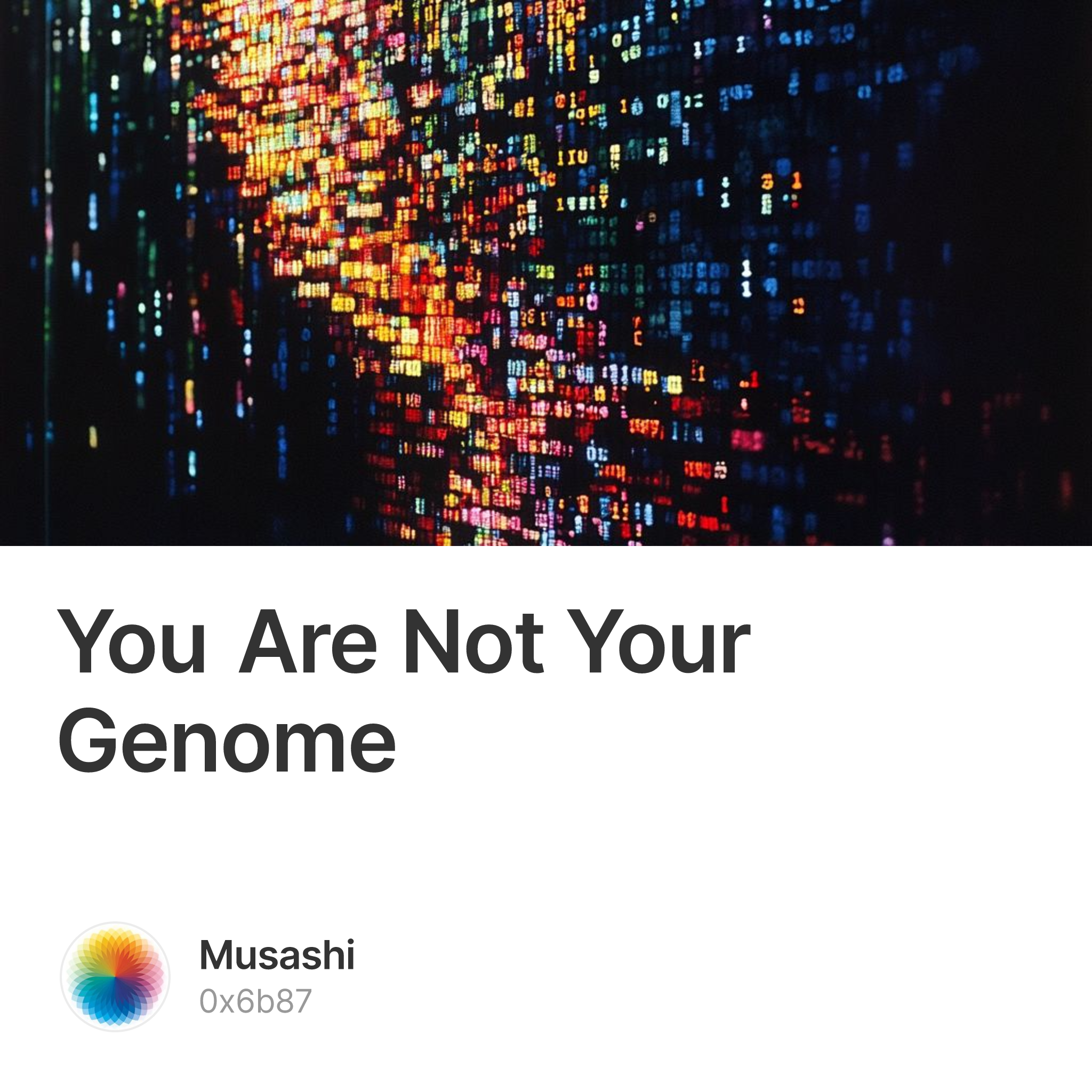“More than two decades later, the information supplied by the HGP consortium, and by the subsequent sequencing of tens of thousands of individual human genomes, is proving to be a vital resource for biomedical research. That was always the hope, and a significant part of the mission. But not only has this information brought us little closer to understanding life itself; it has in some ways shown us that we are further away from such understanding than we thought. For if there is anything like a language of life, it will not be found in the genome—which does not resemble any instruction booklet ever made by humans.” -- Philip Ball*, How Life Works*
DNA encodes RNA which encodes proteins — which in turn comprise all that you are. The same goes for every living organism. This is the so-called “central dogma of biology”, and the term is apt, for it is at once central to the modern conception of life, and dogmatic, in that it to even question its practical significance is tantamount to heresy.
A natural implication of the central dogma is that you are, in some basic sense, your genome (that is, your full suite of genes). This basic assertion / insight informs the contemporary biomedical paradigm as well as our popular understanding of the human condition. Since genes encode proteins and proteins encode you, it stands to reason that a deeper understanding of the relationship between your genes and its expression (i.e. your phenotype) is the key to a more powerful and precise capacity for medical intervention, and, by extension, medical enhancement. One sees this ‘gene’s-eye’ view of things pop up all the time in everyday conversation. When someone has some kind of quirk or condition, it’s common to here it claimed “oh, it’s probably just genetic”. After all, we are, according to the dogma, genes all the way down.
The genetic revolution was kicked off by Gregor Mendel in the 1800s and reached fever pitch with the elucidation of the structure of DNA by Crick and Watson in 1953. The first human genome was then sequenced in 2003, as part of the Human Genome Project, and it was hailed — rightly — as a breakthrough on the order of sending man to the moon. The success of the project was celebrated by no less than the then president, Bill Clinton, in a televised address. Today,” he said, “we are learning the language in which God created life.” Grand stuff indeed.
The expectation following the Human Genome Project was that we would in short order understand the bases of all major human disease along with the means of remedying them. By force of our scientific might, our own condition would finally succumb to human understanding (and therefore reliable intervention). Or so it was thought. As it happens, such has not come to pass. Some twenty years later, even with the advent of advanced forms of genetic engineering — most notably, CRISPR — we are scarcely any closer to understanding ourselves, let alone curing all disease.
It’s tempting to conclude from the past couple decades that we’re still just “early”; that eventually we will map the relationship between genes and disease to such an extent, and that this will provide the basis of new forms of intervention, such that all our hopes and dreams of the genetic revolution will one day be realised. On this view, all we need is more data and more patience, less any new, fundamental theoretical insights.
As the title of this post suggests, I take the other side of this view. While the idea that “you are your genome” is true, it’s true in the same way as the notion that “you are your atoms”. Both are true in an ultimate or fundamental sense, but they’re highly limited epistemic frameworks when it comes to understanding, and ultimately engineering, what is is that we are. To privilege genes, as a causal mechanism, is, I suggest, to privilege an ultimately arbitrary level of abstraction that has no fundamental, epistemic justification. Ultimately, we went after genes because we thought the relationship between genes and various disease states would be simple enough as to afford a means of intervention. In practice, we already know this to be untrue. The relationship between genes and their expression is far hazier, far more complex, than we initially realised. While it would be too strong to call genes and genomics a ‘dead-end’, given its disproportionate focus, it’s at the least a distraction.
If progress is to be made in biology over the next decade/s, it will be made, I suspect, as a result of the investigation and discovery of certain higher-order, emergent biological principles. If genes and their respective proteins represent the lowest level language of biology (the “machine code” of life) breakthroughs will come as a result of understanding the higher-level abstractions that mediate biological systems (the Python or JS of life). In this vein, the work of Michael Levin on bioelectrical networks and cellular intelligence is illustrative of this new paradigm I believe we’re just now entering; one that respects the role of genes but appreciates they’re far from determinative in terms of the physiological manifestations we actually care about.

